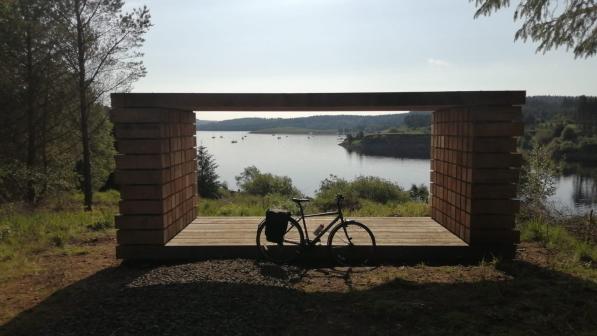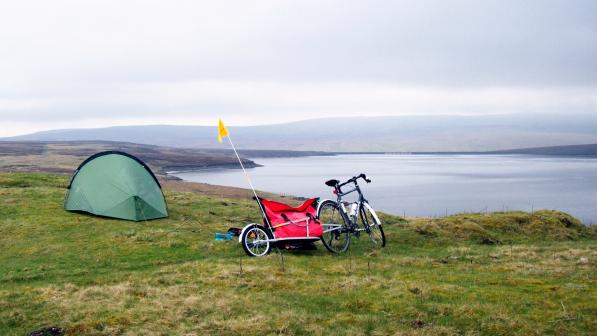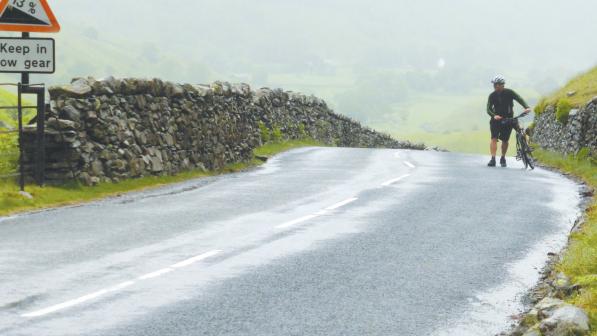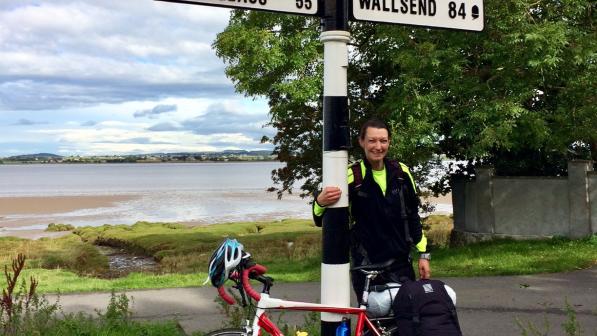Cycling in Northumberland

Northumberland, at England’s northern edge, isn’t as celebrated as it ought to be. With its ruggedly beautiful coastline, robust inland hill country, and the epic Kielder Forest, it offers the tourist some challenging and scenic cycling very much away from it all.
The Coasts and Castles Route that runs 200 miles from Newcastle to Edinburgh sweeps along the Northumberland coast as part of NCN1, taking in must-visits such as Amble, Alnwick, Craster, Bamburgh Castle and Holy Island/Lindisfarne. The causeway to it that disappears beneath high tides is one of Britain’s most awesome rides, but check timings carefully or you might be trapped in the emergency hut on stilts. NCN1 also takes you through characterful border town Berwick, with its fine rust-coloured 17th century bridge that you can cycle (one way) across.
Other long-distance routes show the county off – the challenging Pennine Cycleway, or Hadrian’s Cycleway following (very approximately) the wall, for instance. The popular C2C route crosses the county too, featuring lofty Alston and Allenheads and some very remote-feeling Pennine roads.
Kielder Forest is a mountain biking centre, with its miles of tracks and lakes (a 26-mile trail circles Kielder Water, and is OK for children). The Deadwater Trails are among England’s best singletrack, and the Red Trail is the country’s highest. It’s a good place to see red squirrels. Off-road adventurers can also follow the recent Sandstone Way from Berwick to Hexham, 120 miles across the county. For families there are many quiet routes, such as the 10-mile Alnmouth/Warkworth Loop that’s half car-free, but you need a car to get there.
Many relatively unsung places are great to visit by bike – Hexham, Morpeth, Rothbury for example – and good-food cafes and fine pubs are easy to find. Refreshment will be welcome: Northumberland can be a very, very hilly county.
Cycling groups and clubs in Northumberland
Tyneside and Northumberland (Northumberland)
https://www.cyclinguk.org/local-groups/tyneside-northumberland
Northumberland Tearoom Explorers (Northumberland)
https://www.cyclinguk.org/group/northumberland-tearoom-explorers
Berwick Cyclists (Berwick)
http://www.cyclinguk.org/local-groups/berwick-cyclists
http://www.berwick-cyclists.co.uk/
Holds rides for all, campaigns for better cycling and publicises routes and facilities
Ednan Cycling Club (Northumberland)
http://www.cyclinguk.org/local-groups/ednan-cycling-club
Wooler Cycle Hub (Wooler)
http://www.cyclinguk.org/local-groups/wooler-cycle-hub
http://www.wooler.org.uk/cycling/373-wooler-cycle-hub
Downloadable bike route suggestions in Glendale and the Cheviots, and information about cycle hire
Cramlington CC (Northumberland)
http://www.cyclinguk.org/local-groups/cramlington-cc
Tyne Valley Cycling Club (Wylam)
https://www.cyclinguk.org/local-groups/tyne-valley-cycling-club
http://www.tynevalleycycling.com
What to take with you on your ride
The only thing you really need for cycling is a bike. And maybe a phone, and credit card: in Britain you’re only a call away from any service you might need.
But unless money is no object, it’s wise to take a few things with you on a day ride. A saddlebag, panniers or bikepacking bags are best for carrying stuff. A front basket is second best. A rucksack is third best. Your sweaty back will soon tell you why.
Cycling short distances in jeans and t-shirt is fine, but on a long or strenuous ride – over ten miles say, or in hills – those jeans will rub and the t-shirt will get damp and clingy. Shorts or, yes, lycra leggings and padded shorts will be much comfier, and merino or polyester cycling tops wick away the sweat, keeping you dry and comfy. (They don’t have to be lurid colours.)
If rain’s in the air, pack a rainproof top. If it might turn chilly, take a fleece or warm top. But the thing you’re most likely to forget is the sunblock.
It’s remarkable how often you enjoy being out on the bike so much that you suddenly realise it’s getting dark. So take lights (which are legally required at night). They’re price of a sandwich, take no space, are easy to put on thanks to tool-free plastic clips, and the batteries last for ever.
Take a puncture repair kit (with tyre levers) and pump. Make sure it fits your valves, which will be either ‘Presta’ or ‘Schraeder’ – realising they don’t match is a very common roadside discovery! Carrying a spare inner tube (make sure it matches your tyre size) makes puncture repair much easier: mend the old one back at home. If you do get in trouble, some kindly passing cyclist will probably stop to help.
Using a helmet is a personal choice – they’re not legally required.
Cycling makes you thirsty, so take lots of water. Long-distance riders talk about ‘the bonk’ – a sudden loss of energy rendering you almost stationary. It’s miraculously and instantly cured by eating something sweet. On short rides you’re unlikely to run out of energy, but just in case, take a snack like flapjack, banana, chocolate or jelly babies.
Taking a packed lunch or picnic will save you money, though that hot drink and cake in a cosy cafe could yet prove very tempting!
Your phone GPS could be invaluable for showing where you are when lost; you can download free detailed UK maps and GPS software before your trip.
Paper maps are still useful, though, so take one: no power source or wifi signal required, and they’re great for suggesting possibilities or changes of plan.




